The Greek Folk Instruments Vol. 01
Lyra
1995
Tracks:
a) Constantinople lyra
Asia Minor Dance Suite
1. Taximi Hijaz 2:35
2. Zeibekikos 3:03
3. Syrtos Azizie 3:33
4. Karsilamas 1:41
5. Taximi Kiourdili Hijazkiar 1:59
6. Zeibekikos "Whenever you see two cypress trees" 2:59
Socrates Sinopoulos, Constantinople Lyra
Pericles Papapetropoulos, Tambour
Amin Ala Gabu, Bentir
Socrates Sinopoulos was born in Athens in 1974
b) Cretan Lyra
7. Syrta Rodinou 5:36
A medley of traditional melodies named in honour of Andreas Rodinos (1912-1934) after the manner in which he himself performed (and in 1934 recorded) them. They form a significant part of the Cretan musical tradition.
8. Rethemiotiki sousta 3:12
9. Stafidianos melody (manes) 3:03
10. "Kondylies" from Mylopotamos and a fast "pentozali" (Cretan dance) 5:16
11. "Kastrinos" dance (Maleviziotikos) 5:02
Zaharias Spyridakis, Cretan lyre (with supplementary string, #3-6 &without #7),
Karolos Kouklakis, Laouto (lute)
Pericles Papapetropoulos, Boulgari (#3,4,6,7)
Vangelis Karipis, Bentir (#3) & Toumbaki (#5)
Tambour (#3: 3,
Zaharias Spyridakis was born in Athens in 1971 and in 1984 began studying with Kostas Mountakis.
c) Pontic Lyra
12. Kotsari. From the district of Kars 2:58
13. Lament (Charon) 2:46
14. Omal (4/4) From the region of Garasar 2:56
15. Tik (5/8) From the Matsoka area of the Pontus. Solo dance 2:57
16. Dipat (9/8) From the district of Trebizond. A woman's dance 2:55
("kodespiniakos").
17. Tas (6/8) From the district of Kars. 2:43
18. Pyrrihios-Sera (3/8). From the Matsouka area in the district of Trebizond. 2:40
George Amarantidis was born in 1944 in Kapnohori, Kozani. His father was also a lyra player and singer. He grew up and was taught his art in an environment where the Pontic musical tradition was authentic and alive. At the age of 15 he began playing the lyra at weddings, festivals and other celebrations. After arriving in Athens around 1973-74, he met Dora Stratou with whom he worked for nine years, as well as with Domna Samiou. He has always tried to remain faithful to the Pontic tradition, avoiding innovations. Therefore his recordings only include old traditional songs. The lyra he plays in this collection is 300 years old, made of plum wood and of course, originates in the Pontus.
Daouli played by Yiorgos Yevyelis.
Tracks:
a) Constantinople lyra
Asia Minor Dance Suite
1. Taximi Hijaz 2:35
2. Zeibekikos 3:03
3. Syrtos Azizie 3:33
4. Karsilamas 1:41
5. Taximi Kiourdili Hijazkiar 1:59
6. Zeibekikos "Whenever you see two cypress trees" 2:59
Socrates Sinopoulos, Constantinople Lyra
Pericles Papapetropoulos, Tambour
Amin Ala Gabu, Bentir
Socrates Sinopoulos was born in Athens in 1974
b) Cretan Lyra
7. Syrta Rodinou 5:36
A medley of traditional melodies named in honour of Andreas Rodinos (1912-1934) after the manner in which he himself performed (and in 1934 recorded) them. They form a significant part of the Cretan musical tradition.
8. Rethemiotiki sousta 3:12
9. Stafidianos melody (manes) 3:03
10. "Kondylies" from Mylopotamos and a fast "pentozali" (Cretan dance) 5:16
11. "Kastrinos" dance (Maleviziotikos) 5:02
Zaharias Spyridakis, Cretan lyre (with supplementary string, #3-6 &without #7),
Karolos Kouklakis, Laouto (lute)
Pericles Papapetropoulos, Boulgari (#3,4,6,7)
Vangelis Karipis, Bentir (#3) & Toumbaki (#5)
Tambour (#3: 3,
Zaharias Spyridakis was born in Athens in 1971 and in 1984 began studying with Kostas Mountakis.
c) Pontic Lyra
12. Kotsari. From the district of Kars 2:58
13. Lament (Charon) 2:46
14. Omal (4/4) From the region of Garasar 2:56
15. Tik (5/8) From the Matsoka area of the Pontus. Solo dance 2:57
16. Dipat (9/8) From the district of Trebizond. A woman's dance 2:55
("kodespiniakos").
17. Tas (6/8) From the district of Kars. 2:43
18. Pyrrihios-Sera (3/8). From the Matsouka area in the district of Trebizond. 2:40
George Amarantidis was born in 1944 in Kapnohori, Kozani. His father was also a lyra player and singer. He grew up and was taught his art in an environment where the Pontic musical tradition was authentic and alive. At the age of 15 he began playing the lyra at weddings, festivals and other celebrations. After arriving in Athens around 1973-74, he met Dora Stratou with whom he worked for nine years, as well as with Domna Samiou. He has always tried to remain faithful to the Pontic tradition, avoiding innovations. Therefore his recordings only include old traditional songs. The lyra he plays in this collection is 300 years old, made of plum wood and of course, originates in the Pontus.
Daouli played by Yiorgos Yevyelis.
♫☆`*♥¸¸.•*¨*•♫☆`*♥¸¸.•*¨*•♫
♫☆`*♥¸¸.•*¨*•☆♫`*♥¸¸.•*¨*•♫
The Cretan lyra is the
most popular melody instrument on the island of Crete (Kriti). It is a bowed
instrument similar to the violin (violi), and it usually has three strings
which are tuned in fifths. The lyra players play the lyra in an upright
position. They sometimes rest it on the kneee, or, if they are standing,
they will put one foot up on a chair and rest the lyra on the thigh.
They have an unusual way of fingering the strings. Instead of pressing
the strings with the finger tips (like violinists or guitarists do),
they press against the sides of the strings with the tops of their
finger nails. Sometimes the lyra players play unaccompanied, and it
was not uncommon for the bow to have small bells attached to lend
a rhythmic accompaniment to the melodies as the lyratzis played his
lyra. The most common instrument used to accompany the lyra is the
Cretan laouto, which is typically larger than the mainland laouto
and tuned lower. The Cretan laouto players often play melodies with
the lyra rather then just chords and rhythm. Sometimes two laoutos
accompany the lyra, with one playing melody and the other playing
rhythm and chords.
The LYRA of the Greeks
of Pontos (Black Sea region of Asia Minor) is also known as the Kementse.
It is played like a violin (violi) with a primitive style bow, but the musicians
hold the lyra in an upright position. Sometimes they rest the instrument
on their knee when they are sitting, and sometimes it is held out
in front of them. They sometimes even dance in front of the dancers
while holding the lyra in that way. The lyra usually has three strings.
There are several tunings. Common tunings include: a-a-d, e-a-d, and
many others. Since the instrument was often played alone, the tuning
was often done according to the preference of the musician and his
voice's range. Sometimes percussion instruments like a defi or daouli
might be played to accompany the lyra. The musicians usually play
two or all three strings at the same time, utilizing the open string(s)
as a sort of drone to the melody. Sometimes they play the melody on
two strings at once, giving a primitive harmony in fourths. They tend
to play with many trills and embellishments, and with the unusual
harmonies, the Pontian music has a very unique sound.
Constantinople lyra ("politiki" i.e. "of the city" or "polis")
The type of lyra encountered in Constrantinople (Istanbul) is pear-shaped with three strings. What distinguishes it from the other types of lyra found in Crete, the Dodecanese, Thrace and Bulgaria is its small size, nasal sound and the playing technique.
Until the beginning of the 20th century, its repertoire included popular songs and instrumental pieces performed by famous Greek and Turkish lyra-players in the taverns of Constantinople, accompanied solely by the Constantinople lute. At the beginning of this century, thanks to the Greek master Vasilakis, the lyra was introduced into art music ensembles of the "city", replacing the "rebab" and the violin. As a consequence, the technique changed, chiefly due to Vasilakis' pupil Tanbouri Cemil Bey, who introduced new techniques in fingering as well as in the use of the bow, influenced by the tambour, his first instrument. Unfortunately his predecessors, including Vasilakis himself, left no recordings. Nonetheless sufficient evidence of the old technique is to be found on recordings of more recent musicians (during the 20th century) who had not been greatly influenced by Cemil Bey. The most prominent of these are Paraschos, Alekos Bazianos and Lambros Leondaridis.
The type of lyra encountered in Constrantinople (Istanbul) is pear-shaped with three strings. What distinguishes it from the other types of lyra found in Crete, the Dodecanese, Thrace and Bulgaria is its small size, nasal sound and the playing technique.
Until the beginning of the 20th century, its repertoire included popular songs and instrumental pieces performed by famous Greek and Turkish lyra-players in the taverns of Constantinople, accompanied solely by the Constantinople lute. At the beginning of this century, thanks to the Greek master Vasilakis, the lyra was introduced into art music ensembles of the "city", replacing the "rebab" and the violin. As a consequence, the technique changed, chiefly due to Vasilakis' pupil Tanbouri Cemil Bey, who introduced new techniques in fingering as well as in the use of the bow, influenced by the tambour, his first instrument. Unfortunately his predecessors, including Vasilakis himself, left no recordings. Nonetheless sufficient evidence of the old technique is to be found on recordings of more recent musicians (during the 20th century) who had not been greatly influenced by Cemil Bey. The most prominent of these are Paraschos, Alekos Bazianos and Lambros Leondaridis.
Orpheus obtained the Lyre from Apollo when he was a child and lessons how to play it. Historical it is an instrument that was known at least around 3000 BC in Ur. The lyre was known in Crete at least before 1400 as the Agia Triada Sarcophagus fresco shows a musician who plucks at a seven-stringed lyre with a plectrum (and also an Aulos player is shown). According to a story Orpheus Lyre was thrown in a river and after a journey reached Apollo's temple in Lesbos. Apollo asked Zeus the Lyre to become a constellation, the Lyra constellation, with the known star Vega that once was the polar star. (It is called by the Britons also King Athur's Harp Star).
♥


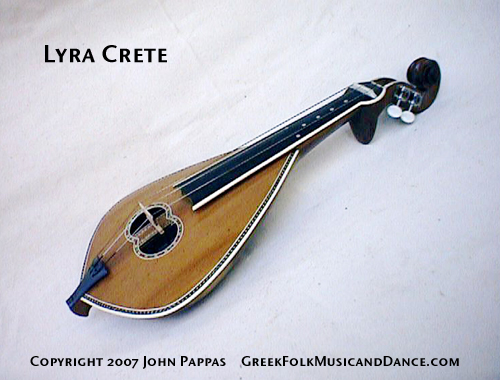
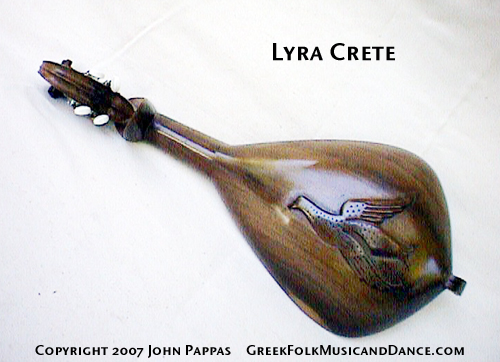
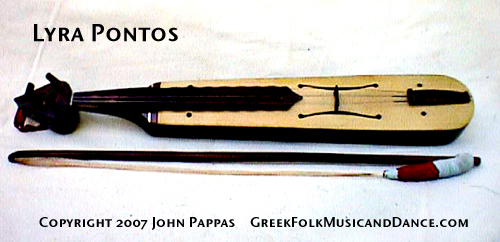
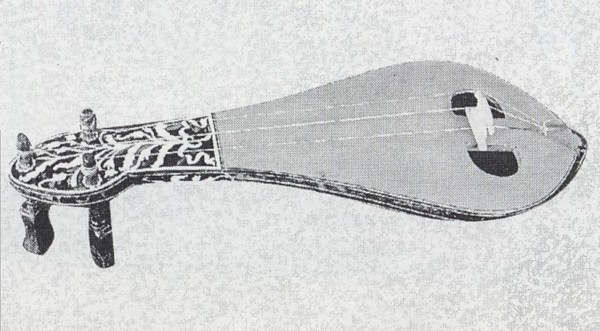
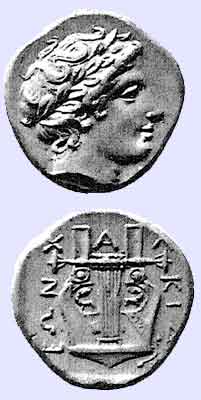




















































+Front.jpg)


















No comments:
Post a Comment